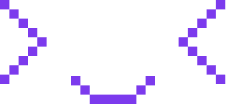GPT Full Form: What Does GPT Stand for in ChatGPT
Let's talk about what GPT stands for, its applications, limitations, and evolution.
GPT has become a well-known term in the field of artificial intelligence. It holds significant meaning in the context of AI. ChatGPT has gained popularity for its natural language processing capabilities and its ability to generate human-like text. But what is it? Considering how often we talk about GPT,it is surprising to know that very few people know about what it stands for. Understanding the full form of it and its implications can shed light on the capabilities and functioning of ChatGPT.
What Does GPT Stand for in ChatGPT?
GPT stands for "Generative Pre-trained Transformer" in the ChatGPT context.
Let's see what each of these terms means!
also checkout: Discover Bible Passages Anytime with Bible Gateway
Significance of - Generative?
The term "generative" refers to the model's ability to generate text that is not only restated but is creative and original. These models make use of generative techniques to produce human-like responses.
They do this by analyzing patterns and structures present in the training data. This allows Chat GPT to provide easy-to-understand and contextually appropriate answers to user queries.
Significance of- Pre-trained Transformer?
The term "pre-trained transformer" refers to the underlying architecture of GPT models. Transformer is an advanced type of neural network architecture. It has gained immense popularity for its effectiveness in language-related tasks.
The "pre-trained" aspect shows that the model has undergone extensive training on a diverse range of data. This allows it to understand and generate meaningful responses.
Ask AI Anything-Free with Merlin

How Does ChatGPT Use Generative Technology?
With the help of GPT technology, it can provide natural and easy responses to users through chat. It uses deep learning models to analyze textual data, predict subsequent words in a given context, and generate responses. It is based on a novel training method known as Reinforcement Learning from Human Feedback (RLHF).
RLHF trains the assistant by first simulating artificial conversations with humans. And then tailoring its responses based on their accuracy and relevance. By repeating this process, ChatGPT continuously improves its understanding of user queries. This helps it generate more accurate responses.
Evolution of ChatGPT: From GPT-1 to 4
GPT 1
The first version was introduced in 2018. It was designed to learn from a huge amount of text from the internet. It read lots of sentences and learned how words fit together, just like how we learn language by reading and listening.
After learning from all that text, GPT-1 could do some really cool things. It could answer questions, complete sentences, and even write paragraphs that sounded like they were written by a human. It was kind of like having a smart friend who could help with writing and talking.
However, it wasn't perfect. Even when it gave correct answers, the context of these answers could be questioned. To fix this issue, GPT 2 came into the picture.
\
GPT 2
GPT 2 was released in 2019. What made it special was its ability to understand and generate text that was shockingly similar to what a human would write. It was like having a computer friend who could write stories, answer questions, and even have conversations.
It learned from an immense amount of text from the internet, just like GPT-1. But it took things to a whole new level. It read and analyzed so much text that it became a real expert in understanding how words fit together. With this, it could create readable and meaningful sentences.
But GPT-2 wasn't perfect either. Sometimes it would generate responses that sounded good but couldn't be completely accurate or reliable. So, it was important to double-check its answers.
Ask AI Anything-Free with Merlin

GPT 3
It was released in 2020. GPT-3 is much larger in terms of model size and number of parameters. It has a whopping 175 billion parameters, compared to GPT-2's 1.5 billion parameters.
GPT-3 demonstrates superior performance in various language tasks. It exhibits better grammar, coherence, and contextual understanding. It generates text that is even more human-like and natural. The larger model size contributes to its improved performance.
It also has better support for multiple languages. It can comprehend and generate text in different languages easily. It broadens its applicability and accessibility for users around the world.
GPT 4
It is the most recent version of ChatGPT. It was launched in March 2023. Unlike GPT-3, GPT-4 can work not only with text but also with images. It provides responses that are not only safer but more useful too! It learns from the data that is being entered by users and learns from it as well. Making it the most efficient version to date (obviously!). With greater word limits, more efficient responses, and better experience, GPT-4 stands out as a smarter, more sophisticated, and improved system compared to its predecessors.
What Are the Limitations of ChatGPT?
While ChatGPT offers remarkable capabilities, it also comes with limitations and challenges. The biases that were subconsciously inhibited in the training data with the kind of data used and collected can influence responses. This makes it very important that the responses that come from ChatGPT are carefully monitored. Moreover, there is a risk of generating inaccurate or misleading information. Human supervision is essential to ensure the responsible and ethical use of ChatGPT.
Ask AI Anything-Free with Merlin

Applications of ChatGPT in Chatbots and AI Assistants
ChatGPT's association with the broader generative technology opens doors to a lot of applications. Its natural language understanding capabilities make it a very valuable tool. It can be used for content creation, customer service interactions, and educational assistance.
Users can leverage it to generate written content, engage with customers, or seek academic support. They can also use it to help them with research and creating schedules according to priority.
Future Developments and Implications of ChatGPT
As ChatGPT models continue to evolve, future developments hold immense potential. Advancements in training techniques, mechanisms, and model architectures can improve the accuracy and reliability of this model. However, it is necessary to consider potential challenges and ethical implications, such as ensuring transparency and addressing biases.
Conclusion
GPT combines the ability to generate creative text with the power of the Transformer neural network architecture. It has evolved from GPT-1 to GPT-4, with each version improving upon the previous. The latest version, GPT-4, introduced image processing capabilities. Future developments in this technology hold promise for further improvements. However, ethical considerations and addressing challenges are important for responsible use.
Ask AI Anything-Free with Merlin

FAQs
1. Is GPT Chat safe to use?
GPT Chat, or ChatGPT, is generally safe to use. OpenAI takes safety measures like encrypting data both at rest and in transit to protect user information.
2. What role does the pre-trained transformer play in GPT models?
The pre-trained transformer architecture forms the foundation of GPT models, enabling them to understand and generate meaningful responses based on the training data.
3. Does ChatGPT store my data?
Yes, it does. It uses it for further training of the AI model.
4. Can ChatGPT conversations be deleted?
Yes, they can be deleted. To delete them, tap on the conversation you want to go to and click on the dustbin icon that appears next to it.
5. What is the full form of GPT in ChatGPT/AI/machine learning?
The full form of GPT is a Generative Pre-trained Transformer in a computer language context.
Last updated : 2024-06-08
Experience the full potential of ChatGPT with Merlin


Kalpna Thakur
Our marketing powerhouse, crafts innovative solutions for every growth challenge - all while keeping the fun in our team!